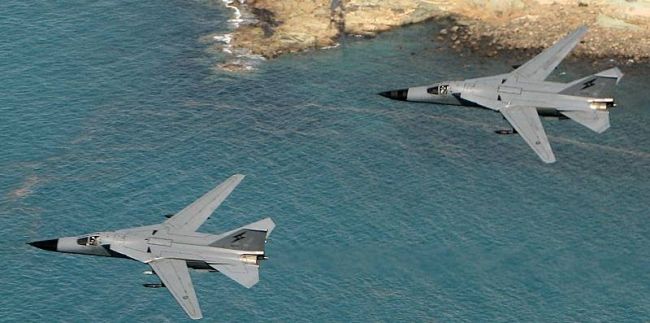EDWARDS AIR FORCE BASE, Calif. (AFNS) — A developmental test team here partnered with an operational test team from Texas to accelerate testing and deliver to the warfighter B‑1B Lancers that can find and strike moving targets in close-air support of ground troops even quicker than before.
Merging developmental and operational testing to consolidate resources on a compressed timeline, members of the 419th Flight Test Squardon and Global Power Bomber Combined Test Force and the 337th Test and Evaluation Squadron from Dyess Air Force Base, Texas, worked to ensure the B‑1 upgrade was ready for combat operations by January.
The members of the 419th FLTS and 337th TES conducted a series of tests that culminated Nov. 15, completing Laptop Controlled Targeting Pod Phase II.
“During Operation Iraqi Freedom and Operation Enduring Freedom, it became clear that the B‑1 needed an additional capability to support close-air support scenarios,” said Christina Ryskey, the project lead engineer and B‑1 targeting pod engineer at the 419th Flight Test Squadron and Bomber Combined Test Force.
That capability came in the form of Laptop Targeting Pod Phase I.
“The first phase integrated a targeting pod, but still required the weapons system operator to manually enter any coordinates derived from the targeting pod,” said Maj. David Marten, the B‑1 flight commander and project pilot at the 419th FLTS. “This only allowed the pod to be useful on stationary targets.”
Although Phase I allowed the B‑1 to interface with the targeting pod, it proved to be a limited capability, as there was no hand-off of information from the pod back to the airplane. Although coordinates were derived from the pod, manually entering the data increased time and decreased the B‑1’s ability to strike a moving target.
The solution, LCTP Phase II.
“Now with the second phase, we not only have the ability to complete the loop of the targeting pod, but also include the ability to drop laser targeted bombs from the B‑1,” said Lt. Col. Hans Miller, the 419th FLTS commander and Bomber Combined Test Force director. “So not only can I track and identify the targets on the ground, I can strike ground targets moving at low and high speeds. That is a crucial capability that we have with this upgrade.”
A completed communication loop between the plane and the targeting pod, which allows for direct importation of coordinates, shortens the kill chain, which is a significant increase to capability in the field, said Marten.
“Guys on the ground calling for air support will get their bombs faster and with more precision,” he said.
“If we’re told that there’s a target in the vicinity, via ground troops, I can visually acquire with the pod, get exact location, directly import that information into the weapon system and attack it,” said Maj. Michael Jungquist, the 419th FLTS project weapons system officer. “The targeting pod tells the weapon exactly where to go and can refine the target with lasers in the pod. I’ll be able to put weapons on a target, even if it wasn’t where it was when I first started looking at it.”
LCTP Phase II’s self-lasing capability allows the B‑1 to track targets, constantly update its coordinates and employ GBU-54 Laser Joint Direct Attack Munition.
“With Phase II, the B‑1 gets as much precision as any close air support player, but now combined with global reach, large payload and long loiter time provided by a strategic bomber,” Marten said.
In addition to favorable test results and upgraded capabilities, the planning and execution of the testing were important pieces to the puzzle because the time between test commencement to operational delivery was only 8 months.
“Another huge success of the November test was that it was a great example of integrated operational and developmental test,” Miller said. “We worked on a compressed timeline and despite some issues that were found in a test, and corrections that were presented and fixed, we were able to still meet that fielding recommendation and deployment timeline so that this can get to the fight and be useable for combat crews going out next deployment.”
Checking into the fight this January is a B‑1 with more capabilities to support the joint service effort.
“We had a timeline to meet in order to better support troops on the ground,” Jungquist said, “and we’re making that happen.”
Source:
U.S. Air Force

 von
von 
